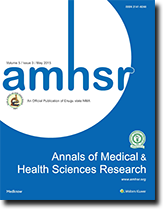

Background: The purpose of this study is to investigate the mean compressive strength and microstructure of the light-cure and self-cure glass ionomer by adding 5%, 10%, and 15% zirconium oxide particles. Methods: In this experimental study, 112 specimens in 8 groups including control groups (light-cure and self-cure glass ionomer) and 3 groups containing zirconium oxide particles (weight percentages 5%, 10% and 15%) in light-cure glass ionomer and 3 groups containing zirconium oxide particles (weight percentages 5%, 10% and 15%) placed in self-cure glass ionomer. The specimens were made in a transparent plastic mold with a diameter of 4 and a height of 6 millimeters. Lightcure glass ionomer cements were emitted from the light cure unit after 80 seconds light radiation. Then all specimens were stored in distilled water (37°C) for one day. Then they were subjected to compressive strength test using the Universal Testing Machine (STM- 20) (SANTAM) with 2 N initial force and 0.5 mm/min blade speed). The compressive strength (MPa) was analyzed by one- way ANOVA and HSD post hoc tukey (p<0.05). Results: In light-cure glass ionomer groups, the highest and lowest mean compressive strength were observed for groupe containing 15% w zirconium oxide particles (228.51) and control group (170.44). In the self-cure glass ionomer group, the highest and lowest mean compressive strength were observed for groupe containing 10% w zirconium oxide particles (36.04) and control group (30.58). Conclusion: Based on the results of this study, it can be concluded that the addition of zirconium oxide particles 15% w in light-cure glass ionomer increases the mean compressive strength.
Select your language of interest to view the total content in your interested language
Annals of Medical and Health Sciences Research received 24805 citations as per google scholar report
 The Annals of Medical and Health Sciences Research is a monthly multidisciplinary medical journal.
The Annals of Medical and Health Sciences Research is a monthly multidisciplinary medical journal.